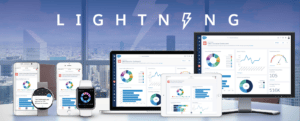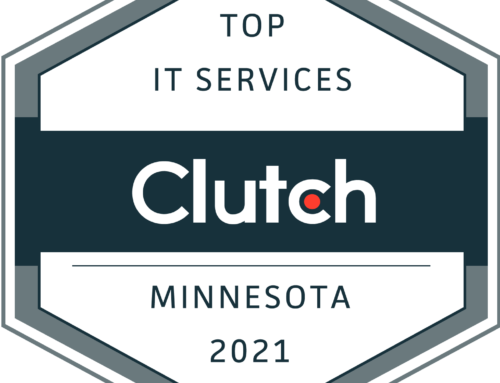Salesforce lightning is all the buzz right now and we have been inundated with Salesforce Lightning Rollout questions. This interface has greatly improved the user experience and allows for more customization of the sales process. Now anyone can quickly and easily build apps that run on any device, all without writing a single line of code.
The Lightning Experience is a new user experience designed to help your sales reps sell faster and smarter. With the launch of Lightning Experience, we’ve focused on your sales reps, with a re-envisioned desktop experience to support your sales process. The result is a more productive interface designed to support how sales reps work on a daily basis.
Lightning Experience is available for new and existing Salesforce customers. Whether you’re a new customer, or you’re an existing customer still evaluating the features and the level of effort to enable Lightning Experience for users, this blog will help you plan your rollout strategy from start to finish. Developing a strategy is important for any project you undertake with Salesforce. Paying close attention to how your users will transition to the new experience will increase adoption and boost success.
- Make strategic adjustments with drag-and-drop ease
- Get insightful recommendations and next steps within your sales cycle
- Turn every customer interaction into an opportunity by tracking activities and writing emails from Salesforce
- Improve your sales pipeline visibility and management
- Faster Application development (if you can use standard configuration)
- More flexible architecture for building applications
What It Takes to Go Live
Rolling out a project is a lot like putting on a great show. You have to plan it, market it, communicate about it, and execute it. Once completed the reviews will come in. You want rave reviews, which is why you do previews to work out the kinks before you take your show to the big stage.
As the Salesforce admin, you’re the Director of the show. You make it awesome. For the show we’re organizing right now you’ll plan your Salesforce Lightning rollout, find an executive sponsor, develop & execute a communication strategy for the show. You’ll decide whether to run a pilot for a set of users (like a preview) or go big and enable for all users at once.
Depending on the size of your organization, you might have a Project Manager assigned to the Salesforce lightning rollout, or you may be working with a Change Management department at your company. You will be charged with organizing and executing the rollout from start to finish. Regardless of your role in getting the Lightning Experience live, it starts with learning everything you can about Lightning Experience.
Getting Hands-On with Lightning Experience
One of the best ways to learn about new features is by getting hands-on experience. If you’d like to try out the Salesforce Lightning Experience before you enable it in your production org, you’ve got options.
Use the Lightning Experience Migration Assistant Preview. The Preview feature lets you explore your production org in the new Lightning Experience without actually enabling the interface. You can see exactly how your real data and current customization’s work.
Identify Stakeholders and an Executive Sponsor
It takes a team to deploy any Salesforce Lightning project, and there’s no better time to involve your team than right at the beginning. Identify key stakeholders at your company from across all affected departments and form a steering committee, lead by an executive sponsor who is invested in Salesforce.
Align key stakeholders in your Salesforce Lightning Rollout strategy
This step is critical. Whether you’ve already committed to rolling out the Lightning Experience or you’re still evaluating the features, you’ll need executive support to ensure you’ve got resources and alignment to succeed. In addition, you need the right people from across the company to join your project team. This will ensure that every department has their needs met and increase user adoption once you go live.
Educate Your Company About Lightning Experience
One of the most important questions your executive sponsor and stakeholders will have is, “How will Lightning Experience help my team sell more?” Start by showcasing the benefits of Lightning Experience.
If you’re an existing Salesforce customer, explain what isn’t supported in Lightning Experience today to help your company make an educated decision on when to enable the new interface for your different groups of users.
Let’s go over a few best practices:
- Make sure that your demo org has real data
- Tell your user’s stories when you showcase the app & use real life examples to drive your demo
- Practice makes perfect – Run through your demo in advance to make sure you’re ready, and to practice the flow of how you’ll demo features
- Record your demo – If you record your demo, you can easily share it with people who couldn’t attend in person. The recording can also be a great training asset later!
Perform a Gap Analysis
Performing a gap analysis is where you get into the details of your Salesforce Lightning Rollout and compare it against the features supported and unsupported by the Salesforce Lightning Experience. Conduct a full analysis of what will and won’t work once you move to Lightning Experience. This analysis will help you determine what workarounds you might need to put in place. If you use Enterprise Edition or above, identify which teams are the right fit for a possible pilot of Lightning Experience. Then, educate your company on what they’ll gain and what they’ll miss once you make the transition.
Present Your Findings
After you conduct your gap analysis, assess the impact. This is one of those areas where it pays to have a team! Work with your stakeholders to identify the severity of each gap. You can use several methodologies when assessing impact, including assigning a numeric value to each gap. The Cirrius Solutions team has an excellent template for this if you need one.
After you and your stakeholders have assessed the impact of each gap, you are ready to present your findings to the entire steering committee and your executive sponsor. This meeting is where you showcase all the benefits of Lightning Experience and highlight the gaps you’ve found. Come prepared to advise when you think your company should move to Lightning Experience, the amount of time and resources required for the move, and your proposed launch date.
The Transition to the Lightning Experience:
When you get the green light to proceed, get started on the next steps right away. Executing on a Salesforce Lightning Rollout is as much about preparing your users for the new experience as it is about the technical steps to implement. If you are unsure what next steps to take or have any questions, reach out to see how Cirrius Solutions can help improve your rollout.







